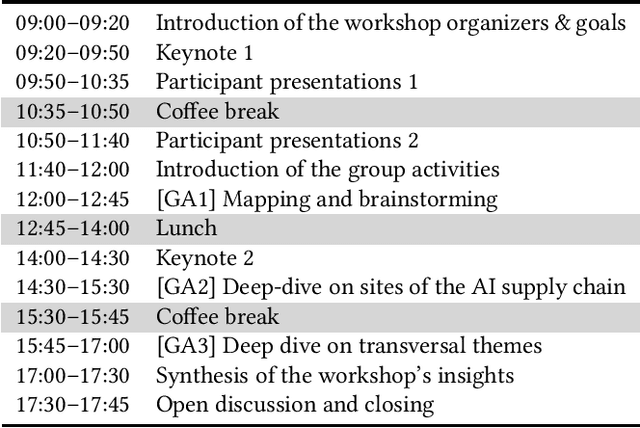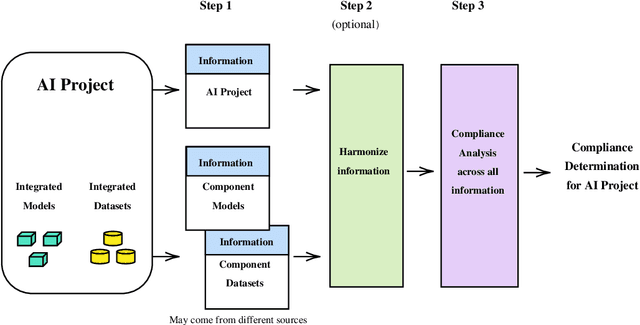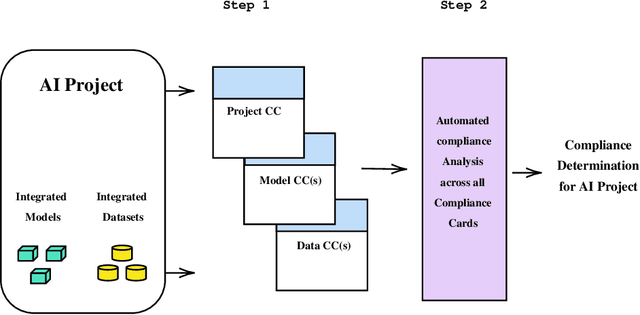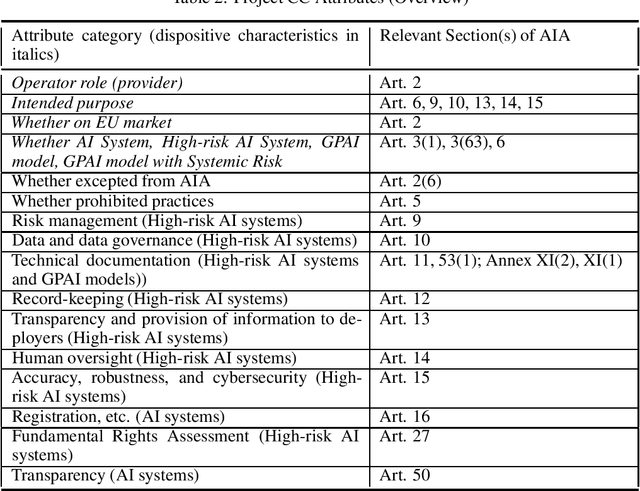Yulu Pi
A Toolkit for Compliance, a Toolkit for Justice: Drawing on Cross-sectoral Expertise to Develop a Pro-justice EU AI Act Toolkit
May 22, 2025Abstract:The introduction of the AI Act in the European Union presents the AI research and practice community with a set of new challenges related to compliance. While it is certain that AI practitioners will require additional guidance and tools to meet these requirements, previous research on toolkits that aim to translate the theory of AI ethics into development and deployment practice suggests that such resources suffer from multiple limitations. These limitations stem, in part, from the fact that the toolkits are either produced by industry-based teams or by academics whose work tends to be abstract and divorced from the realities of industry. In this paper, we discuss the challenge of developing an AI ethics toolkit for practitioners that helps them comply with new AI-focused regulation, but that also moves beyond mere compliance to consider broader socio-ethical questions throughout development and deployment. The toolkit was created through a cross-sectoral collaboration between an academic team based in the UK and an industry team in Italy. We outline the background and rationale for creating a pro-justice AI Act compliance toolkit, detail the process undertaken to develop it, and describe the collaboration and negotiation efforts that shaped its creation. We aim for the described process to serve as a blueprint for other teams navigating the challenges of academia-industry partnerships and aspiring to produce usable and meaningful AI ethics resources.
Measuring Fairness in Financial Transaction Machine Learning Models
Jan 18, 2025



Abstract:Mastercard, a global leader in financial services, develops and deploys machine learning models aimed at optimizing card usage and preventing attrition through advanced predictive models. These models use aggregated and anonymized card usage patterns, including cross-border transactions and industry-specific spending, to tailor bank offerings and maximize revenue opportunities. Mastercard has established an AI Governance program, based on its Data and Tech Responsibility Principles, to evaluate any built and bought AI for efficacy, fairness, and transparency. As part of this effort, Mastercard has sought expertise from the Turing Institute through a Data Study Group to better assess fairness in more complex AI/ML models. The Data Study Group challenge lies in defining, measuring, and mitigating fairness in these predictions, which can be complex due to the various interpretations of fairness, gaps in the research literature, and ML-operations challenges.
Evaluating Fairness in Transaction Fraud Models: Fairness Metrics, Bias Audits, and Challenges
Sep 06, 2024Abstract:Ensuring fairness in transaction fraud detection models is vital due to the potential harms and legal implications of biased decision-making. Despite extensive research on algorithmic fairness, there is a notable gap in the study of bias in fraud detection models, mainly due to the field's unique challenges. These challenges include the need for fairness metrics that account for fraud data's imbalanced nature and the tradeoff between fraud protection and service quality. To address this gap, we present a comprehensive fairness evaluation of transaction fraud models using public synthetic datasets, marking the first algorithmic bias audit in this domain. Our findings reveal three critical insights: (1) Certain fairness metrics expose significant bias only after normalization, highlighting the impact of class imbalance. (2) Bias is significant in both service quality-related parity metrics and fraud protection-related parity metrics. (3) The fairness through unawareness approach, which involved removing sensitive attributes such as gender, does not improve bias mitigation within these datasets, likely due to the presence of correlated proxies. We also discuss socio-technical fairness-related challenges in transaction fraud models. These insights underscore the need for a nuanced approach to fairness in fraud detection, balancing protection and service quality, and moving beyond simple bias mitigation strategies. Future work must focus on refining fairness metrics and developing methods tailored to the unique complexities of the transaction fraud domain.
From Stem to Stern: Contestability Along AI Value Chains
Aug 02, 2024
Abstract:This workshop will grow and consolidate a community of interdisciplinary CSCW researchers focusing on the topic of contestable AI. As an outcome of the workshop, we will synthesize the most pressing opportunities and challenges for contestability along AI value chains in the form of a research roadmap. This roadmap will help shape and inspire imminent work in this field. Considering the length and depth of AI value chains, it will especially spur discussions around the contestability of AI systems along various sites of such chains. The workshop will serve as a platform for dialogue and demonstrations of concrete, successful, and unsuccessful examples of AI systems that (could or should) have been contested, to identify requirements, obstacles, and opportunities for designing and deploying contestable AI in various contexts. This will be held primarily as an in-person workshop, with some hybrid accommodation. The day will consist of individual presentations and group activities to stimulate ideation and inspire broad reflections on the field of contestable AI. Our aim is to facilitate interdisciplinary dialogue by bringing together researchers, practitioners, and stakeholders to foster the design and deployment of contestable AI.
Compliance Cards: Computational Artifacts for Automated AI Regulation Compliance
Jun 20, 2024



Abstract:As the artificial intelligence (AI) supply chain grows more complex, AI systems and models are increasingly likely to incorporate externally-sourced ingredients such as datasets and other models. In such cases, determining whether or not an AI system or model complies with the EU AI Act will require gathering compliance-related metadata about both the AI system or model at-large as well as those externally-supplied ingredients. There must then be an analysis that looks across all of this metadata to render a prediction about the compliance of the overall AI system or model. Up until now, this process has not been automated. Thus, it has not been possible to make real-time compliance determinations in scenarios where doing so would be advantageous, such as the iterative workflows of today's AI developers, search and acquisition of AI ingredients on communities like Hugging Face, federated and continuous learning, and more. To address this shortcoming, we introduce a highly automated system for AI Act compliance analysis. This system has two key elements. First is an interlocking set of computational artifacts that capture compliance-related metadata about both: (1) the AI system or model at-large; (2) any constituent ingredients such as datasets and models. Second is an automated analysis algorithm that operates across those computational artifacts to render a run-time prediction about whether or not the overall AI system or model complies with the AI Act. Working together, these elements promise to enhance and accelerate AI Act compliance assessments.
Beyond XAI:Obstacles Towards Responsible AI
Sep 07, 2023Abstract:The rapidly advancing domain of Explainable Artificial Intelligence (XAI) has sparked significant interests in developing techniques to make AI systems more transparent and understandable. Nevertheless, in real-world contexts, the methods of explainability and their evaluation strategies present numerous limitations.Moreover, the scope of responsible AI extends beyond just explainability. In this paper, we explore these limitations and discuss their implications in a boarder context of responsible AI when considering other important aspects, including privacy, fairness and contestability.
 Add to Chrome
Add to Chrome Add to Firefox
Add to Firefox Add to Edge
Add to Edge